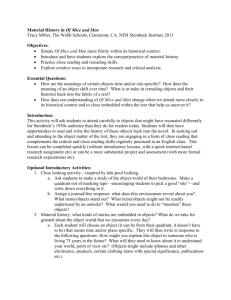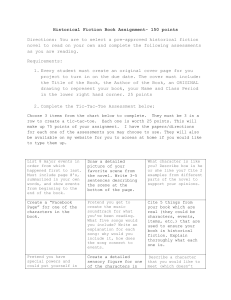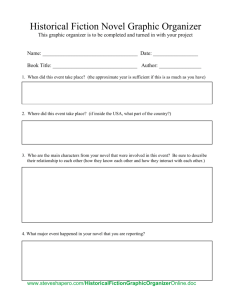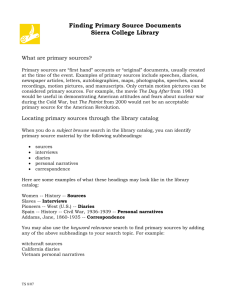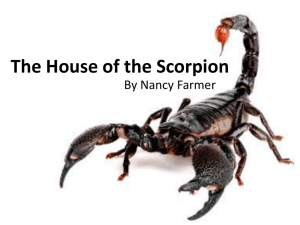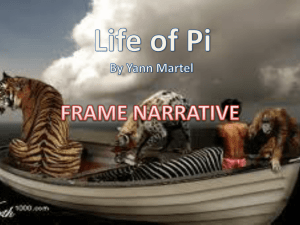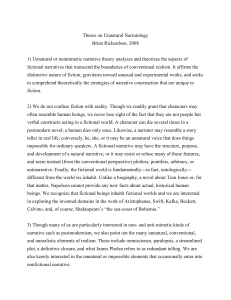found forms_fact sheet
advertisement
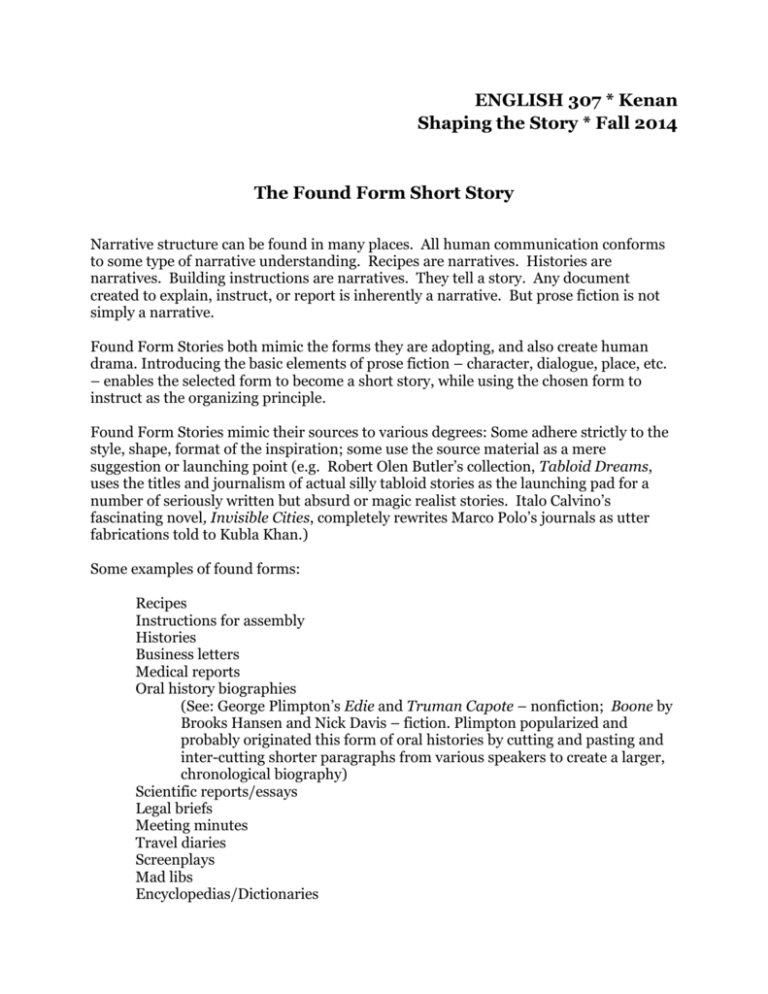
ENGLISH 307 * Kenan Shaping the Story * Fall 2014 The Found Form Short Story Narrative structure can be found in many places. All human communication conforms to some type of narrative understanding. Recipes are narratives. Histories are narratives. Building instructions are narratives. They tell a story. Any document created to explain, instruct, or report is inherently a narrative. But prose fiction is not simply a narrative. Found Form Stories both mimic the forms they are adopting, and also create human drama. Introducing the basic elements of prose fiction – character, dialogue, place, etc. – enables the selected form to become a short story, while using the chosen form to instruct as the organizing principle. Found Form Stories mimic their sources to various degrees: Some adhere strictly to the style, shape, format of the inspiration; some use the source material as a mere suggestion or launching point (e.g. Robert Olen Butler’s collection, Tabloid Dreams, uses the titles and journalism of actual silly tabloid stories as the launching pad for a number of seriously written but absurd or magic realist stories. Italo Calvino’s fascinating novel, Invisible Cities, completely rewrites Marco Polo’s journals as utter fabrications told to Kubla Khan.) Some examples of found forms: Recipes Instructions for assembly Histories Business letters Medical reports Oral history biographies (See: George Plimpton’s Edie and Truman Capote – nonfiction; Boone by Brooks Hansen and Nick Davis – fiction. Plimpton popularized and probably originated this form of oral histories by cutting and pasting and inter-cutting shorter paragraphs from various speakers to create a larger, chronological biography) Scientific reports/essays Legal briefs Meeting minutes Travel diaries Screenplays Mad libs Encyclopedias/Dictionaries 2 POV: Found forms most often ape the style of the form in question, but are often told in second person (instruction manuals), or 1st person (diaries, journals, reports). Screenplays, of course, would be considered as the dramatic/objective third person. Some other famous examples: Both Nora Ephron’s Heartburn(1983) and Laura Esquivel's Like Water for Chocolate: A Novel in Monthly Installments with Recipes, Romances, and Home Remedies (1992) use recipes in interesting ways to organize their books. The great Polish writer, Stanislaw Lem, wrote two collections of stories – A Perfect Vacuum (1971) and Imaginary Magnitude (1973)-- that were chapters, prefaces, and reviews about books on technologies and sciences that don’t exist! Journals, diaries and letters are perhaps the oldest use of the Found Form. One of the oldest forms of the Western novel uses letters (epistolary): Pamela: Or, Virtue Rewarded (1740) and Clarissa: The History of a Young Lady (1748) by Samuel Richardson; Les Liaisons Dangereuses (1782) by Pierre Choderlos de Laclos. One of the more famous early uses would be Daniel Defoe’s A Journal of The Plague Year (1722), which was originally published (horrors!) as what we would now consider nonfiction. Vladimir Nabokov’s Pale Fire (1962) is a 999 line poem with copious footnotes. Milrod Pavic’s astonishing Dictionary of the Khazars (1982) is literally a dictionary of a mythical people. He also published a novel, Landscape Painted with Tea (1988), organized as a cross-word puzzle.
